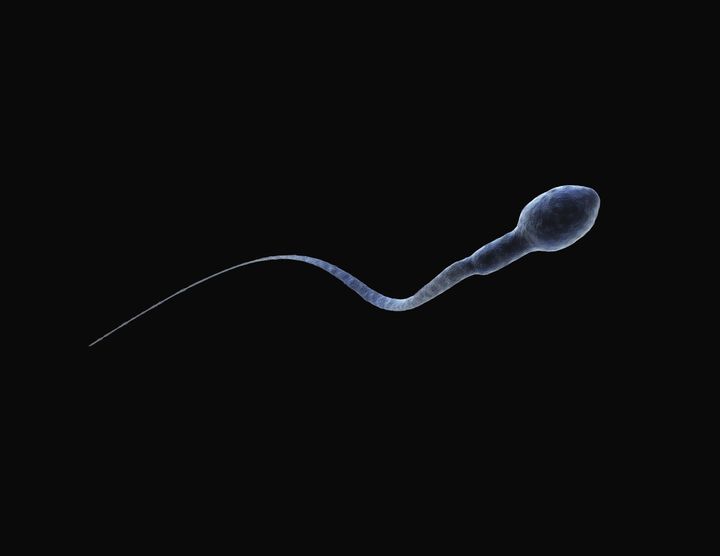A breakthrough fertilisation experiment has opened the possibility of gay couples being able to conceive a child together.
Scientists have confessed that while the scenario was very “speculative and fanciful”, they did not fully rule out the idea in principle.

By working with mice, the team were able to produce healthy offspring while bypassing the normal procedure of fertilising an egg cell with sperm.
This is the first time that the process has been achieved without the need to clone.
The extraordinary result means that sperm could potentially be fused with ordinary cells derived from skin or other tissue to create viable embryos.
It also raises the possibility of ethically questionable applications that turn nature on its head by doing away with the female side of reproduction.
Gay men, for instance, could have babies with each other, and a man could even fertilise his own cells to produce offspring containing a mixture of genes inherited from him and his parents.
More realistically, the technique could allow women whose fertility has been wiped out by cancer drugs or radiotherapy to have their own children.
While eggs can be frozen before cancer therapy and later fertilised in an IVF clinic, currently nothing can be done once they have been lost.
Conception using sperm and somatic cells would also aid the preservation of endangered species, since it avoids the need to recover eggs.
Lead scientist Dr Tony Perry, a molecular embryologist from the University of Bath, said: “Our work challenges the dogma, held since early embryologists first observed mammalian eggs around 1827 and observed fertilisation 50 years later, that only an egg cell fertilised with a sperm cell can result in live mammalian birth.”
But he stressed that the early work demonstrated only a principle, and major hurdles would have to be overcome before reproduction without egg cells became technically feasible.
He added: “This is speculative - it’s entirely speculative and fanciful.”
For the experiment, the scientists started off by creating “parthenogenote” mouse embryos. These are all-female embryos made without sperm by tricking an egg into developing as if it has been fertilised.
Mammalian embryos produced this way usually die after a few days because they lack the right programming. But Dr Perry’s team of researchers found that injecting the parthenogenotes with sperm transformed them into normal embryos that went on to produce healthy offspring.
The outcome, reported in the journal Nature Communications, is hugely significant because parthenogenotes share much in common with ordinary cells such as skin cells.
See also:
Human Cloning Breakthrough As Scientists Use Skin To Generate Embryonic Stem Cells
Artificial Intelligence Firm Claims It Can ‘Resurrect The First Human In 30 Years’
Both kinds of cell multiply by means of a non-sexual form of cell division known as mitosis.
If injecting sperm into a mammalian parthenogenote can produce offspring, theoretically at least it should be possible to achieve the same result using mitotic cells not derived from eggs.
The process relies on the sperm cell being reprogrammed in a way scientists previously thought could only occur as a result of egg fertilisation.
In the study, 30 mouse pups were born with a success rate of 24%. This compares with a 1% to 2% success rate for offspring created by the Dolly the Sheep method of cloning by transferring DNA to donated eggs.
Some of the mice went on to have offspring themselves, and a number had offspring that went on to have their own pups. Fertility is generally seen as a sign of fitness and good health.
Dr Perry said his team was planning to take the next step of attempting to produce live offspring from ordinary non-egg cells rather than parthenogenotes.
Speaking at a press conference in London, he said: “The practical applications of this as the technology stands at the moment are not very broad.
“What we’re saying is that these embryos are mitotic cells - mitotic cells are the type of cell that almost every dividing cell in your body is. And therefore potentially one day we might be able to extend what we’ve shown in these mitotic cells to other mitotic cells.
“Will we be able to do that? I don’t know. But I think, if it is ever possible, one day in the distant future people will look back and say this is where it started.”
Dr Paul Colville-Nash, from the Medical Research Council, which funded the study, said: “This is an exiting piece of research which may help us to understand more about how human life begins and what controls the viability of embryos, mechanisms which may be important in fertility.
“It may one day even have implications for how we treat infertility, though that’s probably still a long way off.”
The parthenogenotes injected with sperm were found to have undergone “distinctive chromatin remodelling”, meaning that the protein “packaging” housing their DNA had been altered.
Embryologist Professor Robin Lovell-Badge, from The Francis Crick Institute in London, said: “I’m not surprised that the authors are excited about this. I think it is a very interesting paper, and a technical tour de force. And I am sure it will tell us something important about reprogramming at these early steps of development.”